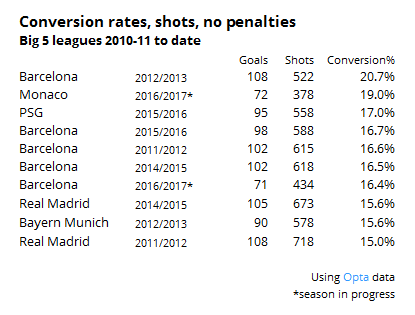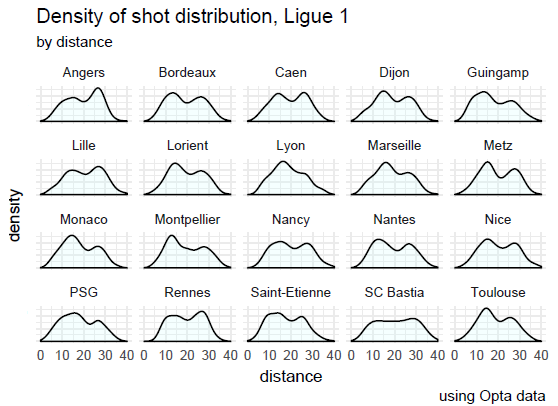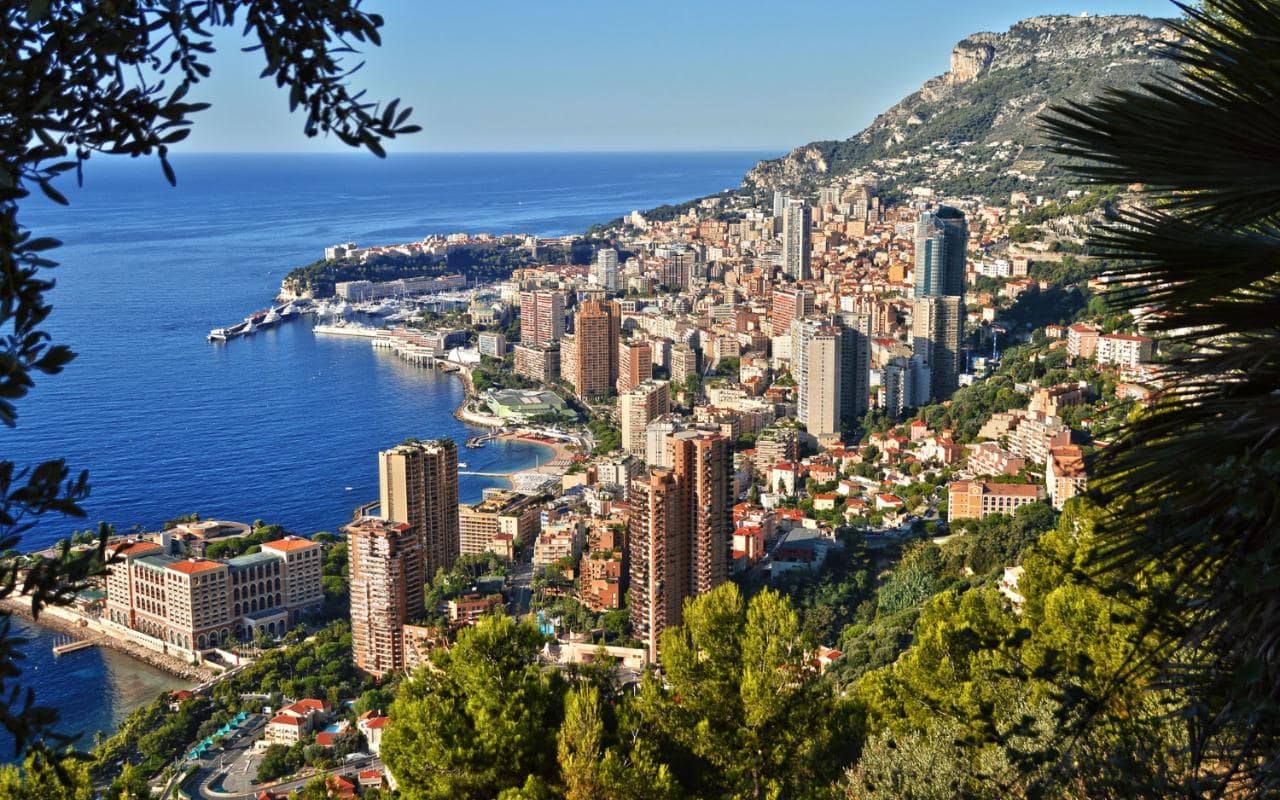There’s a difference between using statistics to inform and actually performing analytical tasks. When this column was weekly it was predominantly the former, and even now that it is more occasional, it feels like few others have really taken the baton and tried to draw out trends, traits or differences that become clear when you stare for long enough at a wall of data. Gamblers will have, but they aren’t prone to writing blogs about the edges they have discovered. Regardless there are still stories that present themselves on a week by week basis, and provide greater insight as to how or why teams and players are doing whatever they are doing, and why it may or may not continue. So here’s a couple that have caught my eye just recently.
- Arsenal’s defence AKA simple truths
The average team in the Premier League has allowed 4.3 shots on target this season.
Arsenal in the first half of the season allowed 3.6 shots on target per game and conceded a goal a game meaning they were tied 7th for the shots and tied third for the goals.
Since that point, they’ve played seven and gone 3-1-3 while allowing 1.7 goals per game and 5.6 shots on target per game. These rates, over this relatively short period rank 15th and 18th respectively. Petr Cech has come in for some criticism, which is perhaps harsh given that he’s 34 and his workload has just gone up by over 50%. The volume is the problem, even in this short period, especially when held against rivals.
We can spin it back across the season. If 4.3 is the average rate of shot on target allowed, a top side is doing badly to exceed this with any regularity. Arsenal have allowed five or more shots on target on 12 occasions this season. In comparison to the rest of the top six, this is standout bad, the rest have allowed that on between four (Man City) and seven (Tottenham) occasions.
Also the trend is poor. It’s occurred seven times since the start of December in just 13 games. Arsenal are simply not protecting their goalkeeper adequately to an extent that they need to if they are to match their ambition. Again rival teams kill them in comparison. Man City last allowed a team to land five shots on target against Leicester on the 10th of December, Man Utd last did on the 4th of December against Everton. Chelsea have twice in three months both against top four rivals, Liverpool three times er… not against top four rivals, and Tottenham four times, three times against rivals and once against Hull. Arsenal have suffered against all and sundry. This seven game stretch has faced visits to Chelsea and Liverpool (both games qualify) but also they've failed to adequately protect Cech in the Watford defeat, the draw at Bournemouth and the insane late win against Burnley. These teams shouldn’t be laying a glove on Arsenal’s defence, yet they are and turning their porousness into results.
There's also the small factor that as the team has become unable to restrict the opposition, the volume of total shots in their games has increased. At the halfway point, Arsenal games featured around 25 shots per game and they had 60% of them. Since then, they are averaging nearly 28 per game and they have only 54% of them. This implies again, to some degree, a lack of control and the dial moving in the wrong direction.
Yet another factor is in their overall shot profile for distance. Last season Arsenal took the closest shots in the league and allowed shots from the furthest away--it looked as though talk of expected goals influencing their on-field play was legitimate. This season, they still take the closest shots of any team in the league, but their opposition are taking their shots from an average of 1.5 metres closer. That's huge. They now rank 17th here and only Bournemouth, West Ham and Swansea are worse by this measure. So: the opposition are getting closer, which allows them to get shots on target more frequently and Arsenal are conceding more goals. Their current goals against rate of 1.2 per game is only exceeded once by Arsenal in the last 16 seasons, in 2011-12. Who is to blame? Francis Coquelin? He usually gets it. What about new players? Has Granit Xhaka done well enough? Is Shkodran Mustafi a reason? Has the manager lost sight of his tactics? Is there a wider malaise?
In another season, the traditional mid-season blip--and this is at least the third season in a row Arsenal's performances have dropped off at some point between the halfway point and the end of the season--might not be so vital. This time round though, the quality of their rivals and their ability to rack up the points means that this top four race is the most keenly contested in years. Arsenal need to pick up quickly, or an ignominious fifth or sixth place finish is going to loom large. The knock on effect from that would likely be a summer of turmoil.
2. Monaco
The big numbers story across this Europe is the insane jet powered Monaco attack. They’ve now scored 72 league goals from 378 shots, a rate of 19% and added on a perfect ten from ten penalties. Here’s a list of teams that have scored above 15% in a big five European League since 2010-11:

A few quick takes here: this is from a list of 686 club seasons. Just TEN of them landed at over 15% conversion. Five of these seasons are Barcelona seasons (their other two ranked 11th and 32nd), so Lionel Messi era. Then you have two Real Madrid years, so Cristiano Ronaldo era. Then Zlatan Ibrahimovic's 38 goal PSG season and Bayern Munich's all conquering 2012-13 season. The idea here is pretty strong, right? Mega clubs firing on all cylinders powered by world stars.
Monaco are different, a well drilled, fast team who are structurally very strong and well competent within their league. But: they don't take that many shots (~13 per game). If we divert into an expected goals model and drill down to a per shot basis to allow comparison to a part season, they are ahead of every other team in this 686 team sample, one of only two teams to be more than 0.05 goals per shot ahead of expectation in either direction, Tito Vilanova's 2012-13 Barcelona team, the other. And they aren't just slightly ahead of that mark, their per shot xG overperformance is at 0.08 per shot. Even allowing for some generous error bars here we're into unchartered territory. Monaco are pulling up alongside a newly discovered sun and its seven planets. Adding to the confusion their expected goal per shot rate is lower this season (0.10) than last (0.11), when they broadly matched their rate. So we have a team that takes a non-exceptional volume of shots, with a non-exceptional expectation of scoring them.
Let's go back outside the model. If we're going to be generous there are good aspects here. We can see here that they have a spike of shots around 10 metres out from goal, and a preference towards shots from closer in, compared to the opposite extreme, Angers:

But there is nothing here to imply a multi season outlier. Even if we presume that models are missing aspects of Monaco's play: they play with great speed, their wingers are excellent crossers of the ball, Kylian Mbappe might be a world class talent, Radamel Falcao may well be a world class poacher, it doesn't explain all of their overperformance. It can't. Even if we presume that all these factors accounted for just half of it, they would still be one of the top ten over performing teams out of 686 regardless of whether you model it or not.
Would any other team on that original list above ship five goals at Man City? They would all probably score three! That's a bit tricksy, but it does focus the idea around what Monaco have achieved: it seems hard to believe that it is anything more than the mother of all positive goal skews.
Now ~700 club seasons is a reasonable but not gigantic sample to compare. The more seasons we witness, the more likely we will see weird outliers at both ends. Twenty years from now when we have nearly 3000 club seasons to look at, we'll likely spot a few more like this Monaco team. This does not mean that simple shot analysis is non-informative, nor does it mean an expected goals model is faulty (beyond it's obvious limitations). It just means that sometimes shit just happens, and a football season is short enough that a full reversion may well not take place.
Leicester City's 2015-16 season is the worst and best example for many things. Among others--and whether this is good or bad will depend on your perspective--it gave the general public belief that anything can happen in sport way above and beyond any realistic probability, but it also absolutely cemented the idea that extreme positive skews can occur for long enough in the space of a season to see a team home. It again highlighted why these type of stories are fascinating, because the reasons why these clubs bounce forward are locked up in the intangibles. We see the outputs, and we know that there are elements of luck involved, but no coach can plan for an extreme skew.
And this is where the Monaco style season is a slight hoodwink, because it distracts us from other more reliable stories.
A manager can make plans and hope to improve his team's shots structure. He has some degree of control there. That growth is more sustainable over time if achieved. What of Atalanta? Under Gian Piero Gasperini, the club has gone from a team that never recorded a positive shots total across five seasons and finished between 11th and 17th each time to battling for a European slot, buoyed by solid metrics. They've taken 58% of the shots in their games and can even consider themselves slightly unfortunate having undershot the defensive end of their expected goals volumes by a small margin. The return might not be so shiny, but it looks as though their improvement is potentially sustainable rather than just a skew. Monaco are definitely one of the best three sides in France but their goal total makes them look like world beaters, Atalanta look like a top five team in Italy because they are probably a top five team in Italy.
The message here is to try and take a wider view. It's the same message this site has been putting forward since its inception in 2013. We're looking to round out the picture and reveal aspects that might otherwise be concealed. Twenty years ago the analysis of Monaco would have started and finished with "they are a brilliant attacking side". Now we are armed with a ton more information and techniques that can challenge whether or not that statement holds or whether they will sustain. The same discussion revolved around Marcus Rashford last season when he blew onto the scene with a glut of goals. Like Monaco he had all the outputs but mystifyingly few of the inputs: the shot volume just wasn't there, and seven goals from his first 26 career shots (26% conversion) was deceptive. Sure enough a season on, and he has recorded a further three goals from 33 shots (9%), a far more realistic output for a young winger/forward type that matched his shot profile. Outlying players and teams are fun because they almost invite the challenge of analysis and cases like these occur across any league. Finding reliable signals are the challenges of analytics but when a team like Monaco is so far off the charts and the reliable metrics aren't singing the same song, you can be pretty sure that they will come back down to earth eventually.
"But Leicester" does not invalidate that.
____________
Find me on twitter @jair1970
